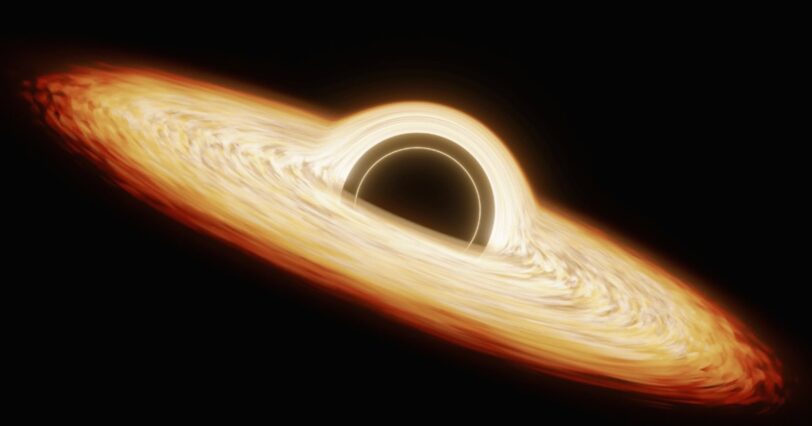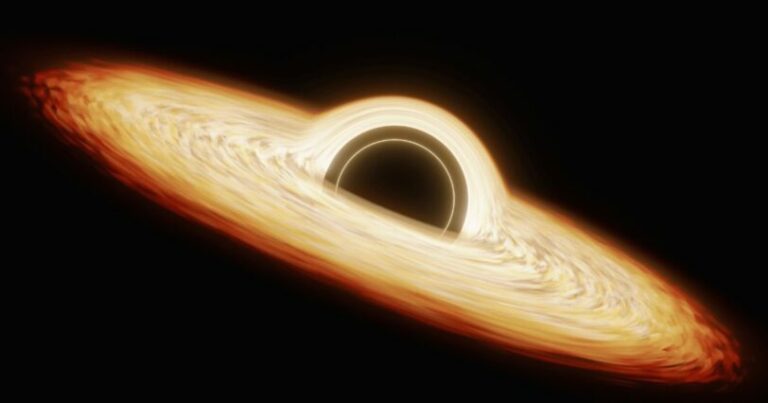New research suggests that black holes might be responsible for producing gold.
The Universe may have more ways of forging heavy elements than we thought.
For a long time, it has been believed that the formation of heavy elements like gold, silver, thorium, and uranium in the universe requires specific and intense conditions, such as a supernova explosion or a collision between neutron stars. Nevertheless, a recent study suggests that heavy elements can also be created through the r-process (rapid neutron capture process) in the vicinity of newborn black holes. These black holes are surrounded by a dense and hot ring of material known as an accretion disk, which supplies the black hole with gas and dust from the surrounding space.

Oliver Just, an astrophysicist from the GSI Helmholtz Centre for Heavy Ion Research in Germany, explained that their study employed advanced computer simulations to analyze the conversion rates of neutrons and protons for a broad range of disk configurations. This systematic investigation led to the discovery that the accretion disks are abundant in neutrons, but only if specific conditions are met.
The study indicates that neutrinos are instrumental in the r-process that results in the creation of heavy elements near newborn black holes. In these harsh environments, the substantial release of neutrinos assists in transforming protons into neutrons, leading to a surplus of the latter, which is crucial for generating heavy elements. The research also proposes that the optimum conditions for the formation of heavy elements are when the combined mass of the accretion disk is within the range of 1 to 10 percent of the mass of the Sun.
Just explained that the formation of neutrons from protons is more frequent when the disk is more massive, and this process occurs when electrons are captured and neutrinos are emitted. These neutrons are then available for creating heavy elements through the r-process. However, if the disk’s mass is too high, the reverse reaction occurs more often, causing more neutrinos to be recaptured by neutrons before they exit the disk. This recapture results in the conversion of neutrons back into protons, which hampers the r-process.
While it has been previously understood that the r-process leading to the creation of heavy elements happens in explosive occurrences like supernovae or neutron star collisions, a recent study has indicated the possibility of the process taking place in different situations. This includes the merging of two neutron stars, or the collapse of a massive star’s core, which forms a black hole surrounded by a dense, hot ring of matter.
Andreas Bauswein, an astrophysicist from the GSI Helmholtz Centre for Heavy Ion Research, stated that by integrating theoretical models, experiments, and astronomical observations, researchers will be able to examine whether neutron star mergers are the cause of the r-process elements in the future.
Do not forget to share your opinion with us to provide you with the best posts !




An impressive share! I have just forwarded this onto a colleague who had been conducting a little homework on this. And he in fact ordered me dinner due to the fact that I discovered it for him… lol. So let me reword this…. Thanks for the meal!! But yeah, thanks for spending some time to talk about this matter here on your web site.
Very rapidly this website will be famous amid all blogging and site-building visitors, due to it’s good articles or reviews
What’s up i am kavin, its my first time to commenting anyplace, when i read this article i thought i could also make comment due to this brilliant paragraph.
Incredible points. Sound arguments. Keep up the good spirit.